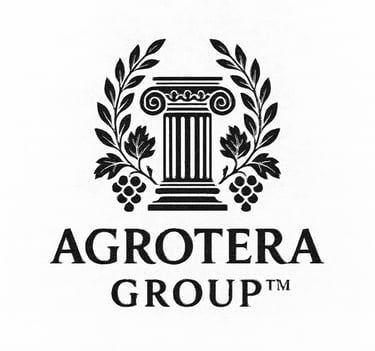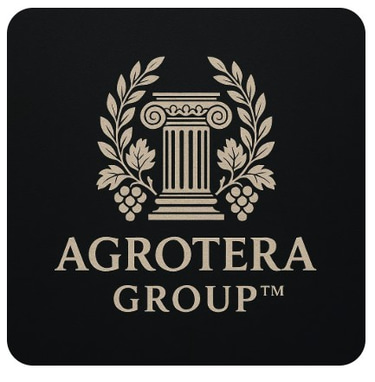Agri-Tech & Syn-Bio: From Lab Success to Market Reality
Cellular agriculture and synthetic biology are poised to reshape food and farming. Founders must overcome regulatory hurdles, scale-up risks, and complex partner ecosystems to win investor trust and market adoption.
7/15/20253 min read


Cultured meat, biofabrication, and microbiome solutions are attracting investor interest but many startups struggle to move beyond the lab. The common pain point? Commercial readiness.
UPSIDE Foods is a perfect example of commercial readiness. Founded in 2015, UPSIDE was one of the first cultured-meat pioneers to receive US regulatory approval. What set them apart wasn’t just their science; it was their early commercial strategy. Long before scale production, UPSIDE partnered with established food suppliers and distributors to secure access to bioreactors, growth media, and pilot manufacturing capacity. These partnerships gave them credibility with regulators, reduced capital needs, and demonstrated to investors that their path to market was commercially viable. Similar approaches are emerging in precision fermentation and crop microbiome startups, where collaboration with feedstock suppliers or processing partners proved critical to securing Series A funding. As of their last funding round in 2023, UPSIDE had raised almost $600M with a valuation over $1B.
Investors and customers want more than a promising strain or bioreactor; they want proof of viability with regulatory approval pathways, predictable yields, and partnerships with farmers, food processors, or consumer brands. Without these proof points the technology risks being stuck as a curiosity.
The pitfalls founders face include:
Regulatory delays slowing fundraising and partnerships.
Difficulty in finding scalable production partners.
High capital burn without early revenue.
Founders must overcome regulatory hurdles, scale-up risks, and complex partner ecosystems to win investor trust and market adoption.
When Great Science Isn't Enough
Cultivated-meat pioneer New Age Eats had all the right ingredients: breakthrough R&D, strong early buzz, and a clear sustainability mission. But by 2023, the company shut down after struggling to secure additional funding to complete its pilot plant. Regulatory delays slowed their ability to reach first sales, and without near-term revenue, capital burn mounted. Without the right partnerships in place to bridge the gap between R&D and commercialization, the technology remained a scientific success but a commercial curiosity.
So where could they have turned? Strategic partnerships might have changed the story entirely. By teaming up with established players like Cargill, Tyson Ventures, or Nestlé, New Age Eats could have leveraged existing manufacturing scale, regulatory expertise, and market credibility cutting both cost and time to market. Co-manufacturers and contract bioprocessors such as Matrix Meats or Roslin Technologies could have provided interim production capacity, helping them generate pilot data and early revenue before their own facility came online.
Meanwhile, collaboration with government-backed consortia or industry groups such as the Good Food Institute (GFI) could have accelerated regulatory approval and unlocked grant funding. And finally, partnering with brands or foodservice operators like Shake Shack or Whole Foods for pilot tastings or offtake agreements could have signaled traction and investor confidence.
In other words, they didn’t just need more money; they needed commercial muscle. The right alliances would have turned regulatory headwinds into strategic momentum transforming a promising innovation into a market-ready venture.
Commercial insight can turn these barriers into opportunities by:
Mapping regulatory pathways and building credibility with agencies.
Structuring pilot agreements with brands or growers.
Designing licensing or co-manufacturing models to accelerate scale.
Founders must overcome regulatory hurdles, scale-up risks, and complex partner ecosystems to win investor trust and market adoption.
Agri-tech Pilots Demonstrating Commercial Edge
Japanese agritech startup TOWING collaborated with major global beverage and agribusiness group Suntory Holdings Limited to launch a pilot using their high-performance biochar combined with microbial amendments on Suntory’s tea farms. The pilot aimed to upcycle manufacturing by-products and improve crop efficiency, replacing chemical fertilizers with TOWING’s technology while validating yield and emissions reductions.
This was widely successful because TOWING took the following commercial actions:
Secured a strong brand and asset owner Suntory as a partner early on not just for an academic pilot.
Aligned the pilot with real business goals such as yield improvement, GHG reduction and using manufacturing by-products that mattered to the corporate partner Suntory
Designed the trial with measurable outcomes such as yield maintenance/improvement and fertilizer reduction which builds the credibility required for scaling.
By contrast too many early-stage agri-tech pilots that remain academic or proof-of-concept only, this partnership shows how a startup can embed its technology in a commercial supply chain, test it with a major operator, and generate data that supports commercialization.
The key takeaway for founders is that commercial traction in agri-tech and synbio isn’t only about technology readiness; it’s about ecosystem readiness. The startups that win are the ones who align early with suppliers, regulators, and downstream partners to make scale both technically and financially achievable.
Closing Thoughts: Syn-bio and agri-tech startups can’t wait until scale to think commercial; they must start aligning early with regulators, partners, and customers.
Ready to take your innovation beyond the lab? We’ll help you navigate regulation, secure partners, and build investor-ready traction. Let’s unlock your path to market.
Empowering frontier startups with strategic commercial advice.
Partners
Growth
hello@agroteragroup.com
+15127301855
© 2025. All rights reserved.
Insights


